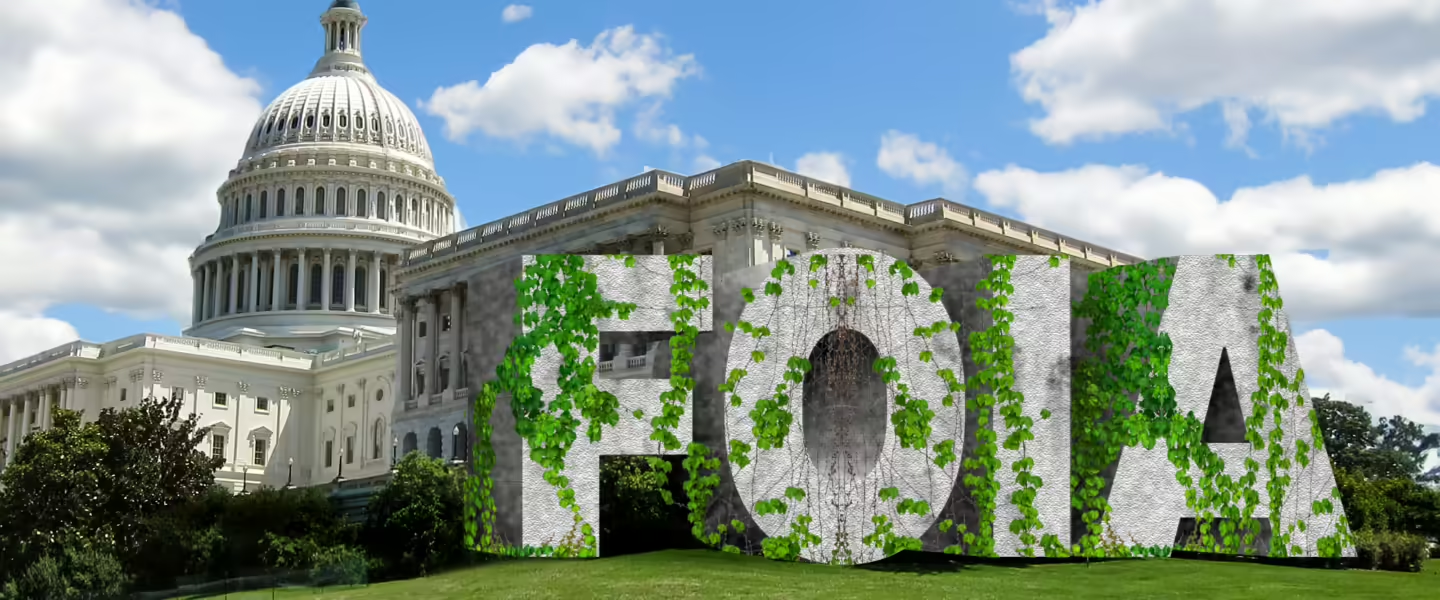Was Scalia right about FOIA and its use and misuse?
|
Listen To This Story
|
In the March/April 1982 issue of Regulation, the policy periodical then published by the American Enterprise Institute, a 46-year-old University of Chicago law professor (and editor of the magazine) by the name of Antonin Scalia offered his thoughts on the Freedom of Information Act (FOIA).
Though originally signed into law in 1966, FOIA had been revitalized in 1974 by post-Watergate amendments that aimed to give it some real teeth. As hinted at by the title of the article, “The Freedom of Information Act Has No Clothes,” Scalia was not a fan of those amendments, nor the spirit of muckraking that helped bring them about (when Scalia makes reference to “investigative journalism,” in scare quotes, it’s hard to read it without imagining the accompanying eye roll).
However, in a somewhat surprising turn, Scalia argues that FOIA is a failure not just on his terms, but on those of the very interests it was ostensibly meant to serve. To quote one rather astounding paragraph in full:
When one compares what the Freedom of Information Act was in contemplation with what it has turned out to be in reality, it is apparent that something went wrong. The act and its amendments were promoted as a means of finding out about the operations of government; they have been used largely as a means of obtaining data in the government’s hands concerning private institutions. They were promoted as a boon to the press, the public interest group, the little guy; they have been used most frequently by corporate lawyers… In short, it is a far cry from John Q. Public finding out how his government works.
According to a study published this March by journalism professors A.Jay Wagner and David Cuillier, entitled a “Tale of two requesters: How public records law experiences differ by requester types,” much of what Scalia wrote over 40 years ago remains true of both FOIA and its state and local equivalents.
The vast majority of requests tend to be from for-profit or commercial entities, who often get exactly what they ask for, and are willing and able to take agencies to court if they don’t. The intended beneficiaries of the law — journalists and, by extension, an informed public — make up only a fraction of the actual requests sent (the most generous estimate putting it below 8 percent of federal requests), are far more often fated to face rejection, and lack the resources to pursue litigation when they are rejected, forced to rely instead on internal processes such as FOIA appeals.
As the study itself says, none of this is particularly surprising to anyone familiar with the FOIA process, but the implications are nonetheless disturbing. Sunlight — “the best of disinfectants,” in the words of Scalia’s SCOTUS colleague Louis Brandeis — should not be treated like any other commodity in an Econ 101 textbook.
A law written to empower journalists, both professional and citizen alike, should not treat those requesters as an undue burden for using the law as it was intended.
As the study’s authors, Wagner and Cuillier, write:
These [for-profit] requesters are not to be blamed — government information has economic value, and this is a residual benefit from the free flow of information. There are, however, unintended consequences to the preponderance of commercial requesters. For-profit uses burden custodians, crowd out public-interest requesters, and fundamentally alter the way requests are processed.
Those who use public records for societal good — to inform the electorate of problems in their communities — are most passionate about government transparency. They are also the ones most disadvantaged, and most shunted, by the system that was specifically created to inform the public and foster democracy.
The outrage from Watergate ushered in a period of American glasnost that, while brief, has had positive impacts that are still felt to this day. While I have written at length concerning my own frustrations with the FOIA process, the law, even as broken and as badly in need of a proper teeth-sharpening as it is, is still breaking vital stories every day.
These days, with what can feel like a Watergate every week, we have no shortage of outrage, but precious little reform. While FOIA has seen minor updates, including modest improvement under the Obama administration, what we are long overdue for is a modern, revitalized FOIA that delivers on the promises of true government transparency, prioritizing those who — again — are simply using the law for its intended purpose.
In the conclusion to “The Freedom of Information Act Has No Clothes,” the future Supreme Court justice attempts to dismiss FOIA’s contributions by accidentally highlighting one of its greatest success stories.
Scalia writes:
The major exposes of recent times, from CIA mail openings to Watergate to the FBI COINTELPRO operations, owe virtually nothing to the FOIA but are primarily the product of the institutionalized checks and balances within our system of representative democracy.
Scalia’s inclusion of the latter example is particularly jarring: COINTELPRO owed its exposure to the Citizens’ Commission to Investigate the FBI’s break-in to the FBI’s Media, PA, offices and their theft of Bureau records; to Betty Medsger’s subsequent reporting; and to NBC’s Carl Stern’s FOIA requests on the bizarre term “COINTELPRO,” which he found often repeated in said records, which culminated in in the first ever federal FOIA lawsuit.
Considering the incident would have happened just a decade prior to when Scalia wrote his article, in the spirit of originalism I can only take it to mean that he was being ironic, and indeed felt FOIA, and the journalism it empowers, was a vital part of those “institutionalized checks and balances.” Wagner and Cuillier’s study is a good reminder that the law has a long way to go before it can truly benefit those whose work benefits us all, rather than the private gains of a few.
Note: The author formerly worked at the nonprofit MuckRock, which is cited in the study.




